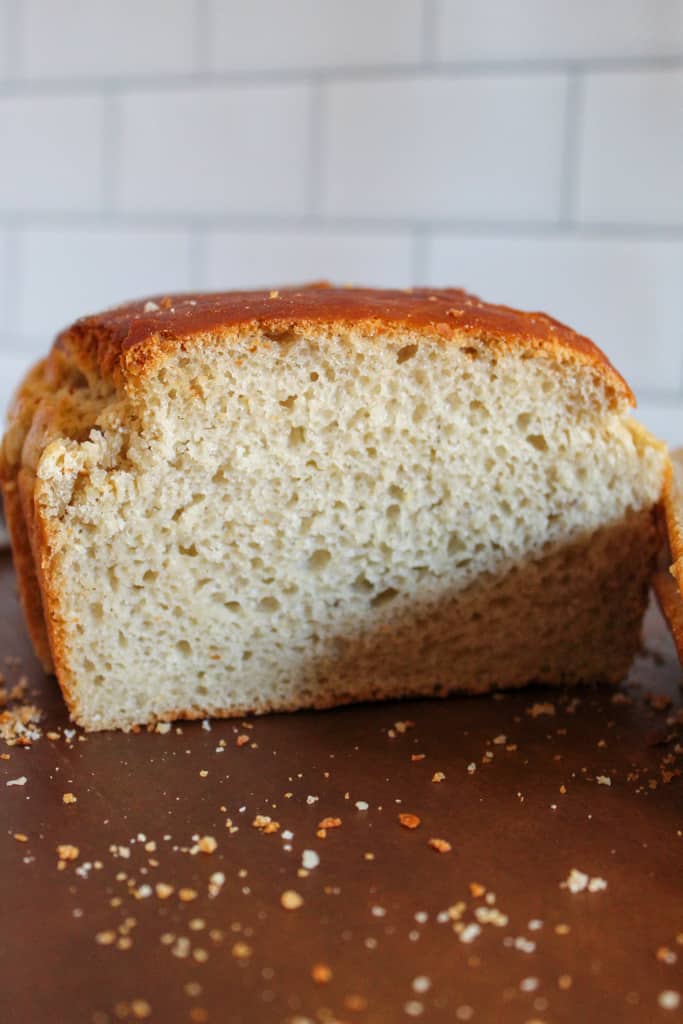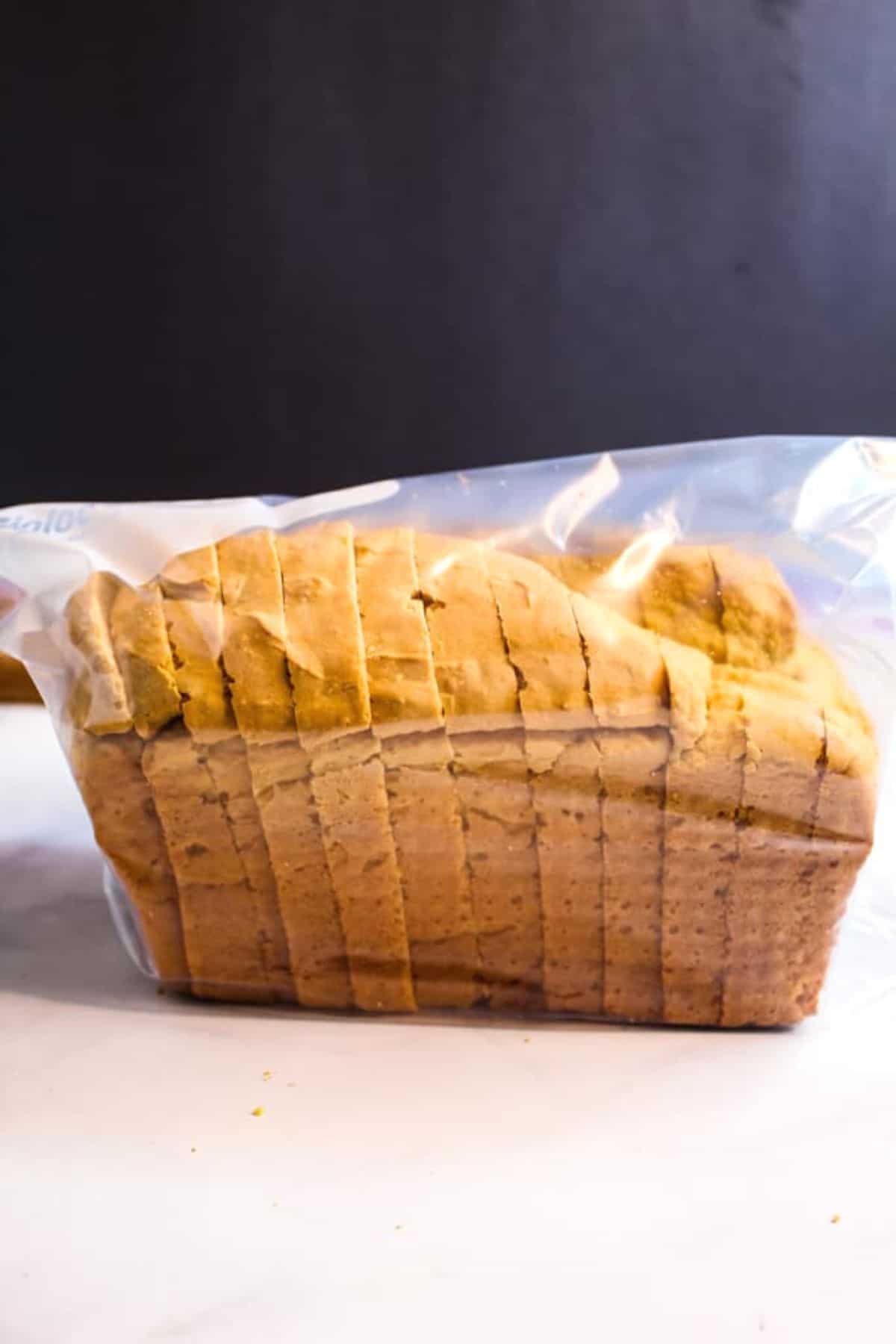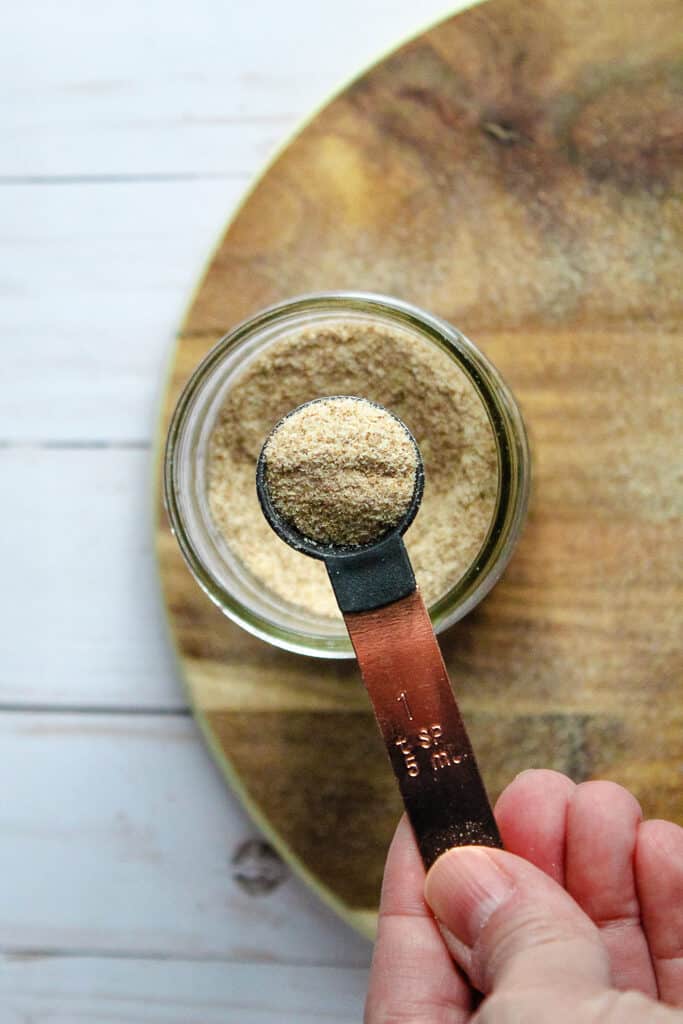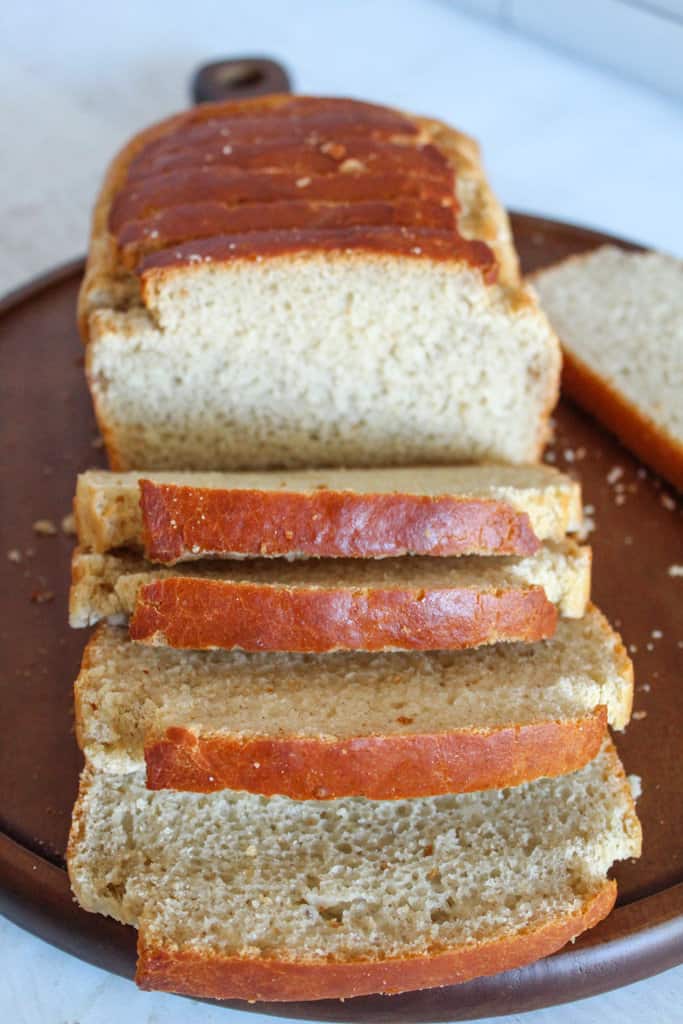How to Store Gluten Free Bread So That It Doesn’t Dry Out
If you’ve been making or buying gluten free bread for any time, then you know how it has a tendency to dry out rather quickly. Regardless of the brand or how you make it, gluten free bread just does not stay fresh for very long. In this article, we’ll look at how to store gluten free bread so it doesn’t dry out so quickly.

It can be so frustrating especially when you have a great, freshly baked loaf of bread or rolls and by the next day, it is dry and crumbly. So what’s the best way to store gluten-free bread so that it doesn’t dry out?
Table of Contents
This is the next post in our Your Gluten Free Bread Baking Questions, Answered series. If you missed the first few, check them out below:
How to Make Gluten Free Bread Without Xanthan Gum
Why Does My Gluten Free Bread have a Gummy Texture?
Your Gluten Free Bread Baking Problems, Answered
So are there any tricks to keeping bread from getting stale? Fortunately, yes! There are several options below that will keep your homemade gluten-free bread recipes as fresh as possible.
How to Store Gluten-Free Bread: Key Take-Aways
Any homemade regular bread, is already prone to becoming dry due to the lack to preservatives used by home bakers. Gf bread is at a bigger disadvantage as it tends to dry out even quicker. Here are are some best practices to keep it fresh:
Allow it to cool completely – The bread must be at room temperature. This is one of the most important things in storing bread. More on this below.
Use plastic wrap – Wrapping the loaf in cling wrap is a good idea for prolonging the shelf life.
Use an airtight container – This is a must as the sealed container prevents circulating air from hitting the bread and drying it out.
Use a bread box – Also called a loaf box, these boxes are described in more detail below.
Use an airtight bag – More on this below, but this is needed for freezing the baked loaf.
Why GF Bread Dries Out Faster Than Traditional Bread
Those with celiac disease and anyone on a gluten-free diet know all to well the frustration of dealing with the subpar gluten-free options for bread, particularly sandwich bread. Whether from a grocery store or homemade, GF bread just doesn’t maintain the softness than gluten-containing bread does.
Gluten free bread dries out quickly because of a couple factors, the first being it doesn’t have the protein (gluten) that would keep it moist and tender. The gluten protein adds structure to breads. It gives them elasticity and tenderness that is tough to mimic. So that’s why breads made without it tend to dry out faster than typical what breads.
The second reason has to do with the nature of the gluten-replacements added to the bread in the preparation process.
Adding gluten-replacements to the bread in the form of binders functions as both a gluten substitute and helps to preserve the shelf life of gluten free bread. Things like egg whites, xanthan gum, guar gum, psyllium husk powder, chia seeds or flax seeds are often added to gluten-free bread dough to take the place of gluten.
These gluten-substitutes work well for replacing gluten but they can also contribute to the bread becoming crumbly and dry as they “turn to dust” as the bread loses moisture content. So if they dry out, the bread dries out.
7 Steps to Storing Delicious Gluten Free Bread
Even though breads made without gluten will inevitably lose their tenderness and freshness, there are certain things you can do to preserve it.
1. Wait Until Its Completely Cool to Slice
This can be a tough one to follow, but trust me, it will make a world of difference in your breads. After your bread is done baking (210F for yeast breads or a toothpick inserted into the middle comes out clean for quick breads), let the loaf cool completely before slicing in to it. This means a cool down period of 5-15 minutes in the loaf pan on a wire rack and then at least 2 hours at room temperature on the wire cooling rack. This is allows the bread to “temper”. If you cut the bread too soon, the inside may be gummy.
Tip: Check the internal temperature of baked bread to ensure it’s reach between 205F-210F using an instant read thermometer.
Reference this sandwich bread recipe and this white bread without xanthan gum recipe to see the cooling process in action.
2. Store It With The Cut Side Down
Regardless of the option you select for storing the bread, make sure to place the cut side of the bread down to preserve it. Use something like cling film to slow the drying process since it will adhere to the bread and keep as much moisture in as possible.
Here’s why this is important: When bread is freshly baked, the moisture content is perfectly balanced for the type of bread recipe used. As it ages, the moisture moves from the crumb outward to the crust, that’s why the crust often becomes softer a day or two after bread is baked.
This soft exterior is great for slicing into, but it does mean you’ll need to freeze the loaf soon. The moisture level of the inside crumb is dropping and you’ll end up with dry bread soon.
3. Use a Breadbox
A breadbox is one of the greatest things you can buy / invest in for gluten free breads. Whether store bought or homemade bread, storing it in a breadbox will help preserve the freshness and keep it from drying out. This one is a great option as it’s large and has a good seal.
Keep in mind that bread in breadboxes will last around 3 days. For longer storage, reference the Freezing section below.
4. Airtight Container
Breadboxes are ideal, but a second option would be a plastic container. Something like a Tupperware container would fit the bill nicely. This storage method is good for bread that you’ll eat within 3 days. Any longer than that and you’ll need to freeze it.
5. Plastic Bag

A large plastic bag will work for storing loaves of bread and even slices of bread. The key is to seal it well and use an actual freezer bag. The freezer bag has a tighter seal and will come in handy to prevent freezer burn when freezing fresh bread.
If you notice excess moisture in the bag, place a paper towel around the bread, then reseal the bag. The paper towel will absorb the excess moisture while keeping your loaf soft.
6. Wrap it Well for Freezing
Freezing bread is my recommended storage method. After a day or two at room temperature in a dry place, I suggest freezing the loaf.
Here’s how I recommend freezing:
- Slice the entire loaf of bread
- Prop open a large freezer-safe bag
- Place the slices of bread into the bag with a small piece of wax paper in between each slice
- Place the bag into the freezer
This allows you to easily take out a frozen slice instead of trying to slice a whole loaf of frozen bread, which, even with the best knife, is not an easy task!
7. Avoid the Refrigerator for Rice Flour Breads
Refrigerating baked and cooled gluten free breads can work for some breads but not all.
Refrigeration will dry out gluten free bread made with rice flour very quickly. The bread is still edible, it is just more suited to toasting than warming and eating. For best results, store rice flour breads like this rice flour bread machine loaf in an airtight container or slice it and freeze it.
Storing homemade bread in the refrigerator helps keep mold away, and can even help balance the moisture level.
Check the ingredients when baking with gluten-free flours or a gluten-free flour blend. Often there is rice flour in the ingredient list, which would not be great for refrigeration.
How to Thaw Frozen Gluten-Free Bread
Using gluten free bread that has been frozen is a lot easier than it sounds.
For thawing frozen gluten free bread slices: If the slices have been frozen as instructed above, then each slice can be removed individually and placed in the toaster to warm and toast them. If you want a less-toasted slice of bread, then keep the toaster settings on low. This will simply warm the bread to be eaten as-is.
For thawing frozen gluten free rolls: Rolls that are baked to a lower internal temperature (around 190F – 200F) defrost much better than fully baked rolls. After they are removed from the oven and cooled completely, place the rolls in a freezer-safe container and freeze completely. When ready to bake, place the frozen rolls in a greased baking pan. The rolls can be baked in a 400F oven for about 5-7 minutes.
For thawing a frozen loaf gf yeast bread: As with the rolls, do not defrost them ahead of time. Defrosting can make the bread hard. Instead, place the loaf in a 325F oven for about 20-30 minutes. Check the bread using an instant read thermometer.
One of the things to keep in mind with storing your gluten free bread, is that it must cool properly first, before slicing into it. The steps above will help extend the shelf life, but as with most homemade breads, it will have a shorter lifespan.
FAQs
Some gluten free breads can be refrigerated, but not all. Breads made with rice flour should not be refrigerated as they dry out faster if refrigerated.
The best way to keep bread soft is to first cool it completely, then store it properly, as instructed in the 7 steps above. Gluten free bread should be in an airtight container at all times to ensure it stays soft.
In order to freeze baked gluten-free bread, first cool it completely. Then place the sliced loaf in an airtight container and freeze. Small pieces of wax paper placed in between each slice will make it easier to remove each slice.
If kept at a constant frozen temperature, gluten free bread will last for 1-2 months in the freezer.





